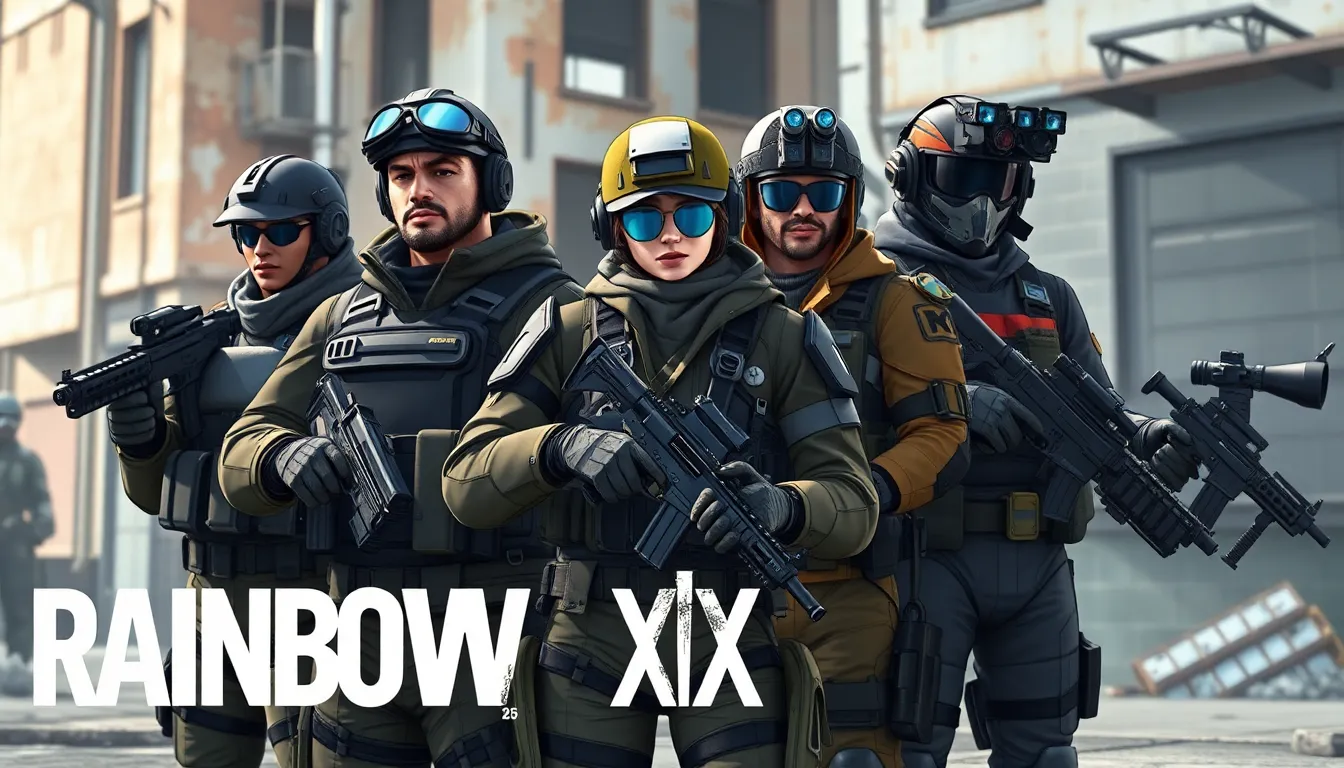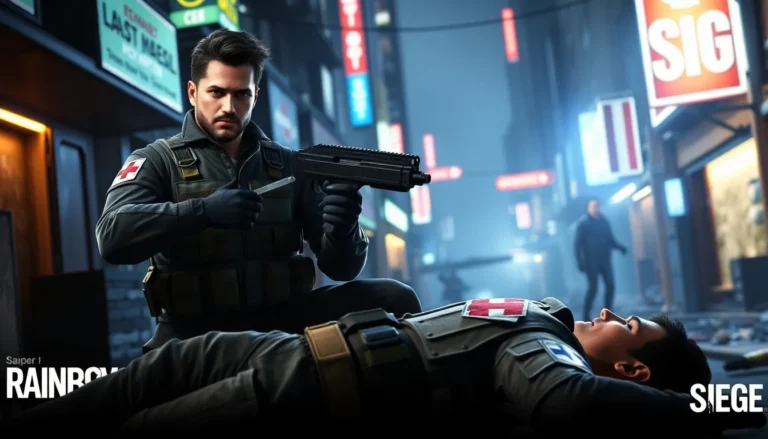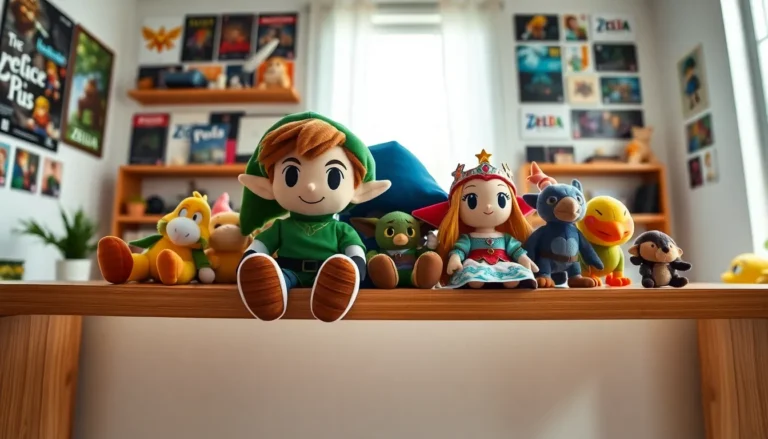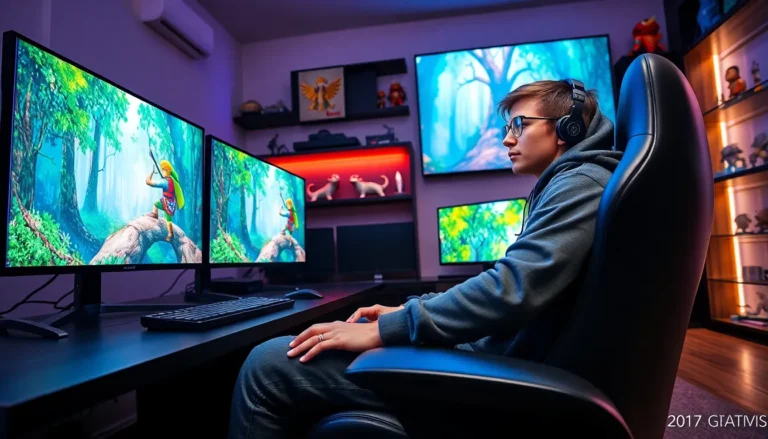Table of Contents
ToggleIn the chaotic world of Rainbow Six Siege, where every second counts and strategy reigns supreme, choosing the right operator can make or break a match. With a dizzying array of characters, each boasting unique abilities, it’s like trying to pick a favorite child—impossible! But fear not, because this tier list is here to save the day.
From the sneaky thrill of Ash to the defensive prowess of Jäger, every operator has their moment to shine. But some shine a little brighter than others. Whether players are seasoned pros or just starting out, understanding the strengths and weaknesses of each operator can lead to glorious victories or, let’s face it, epic fails. So grab your gear and prepare for a deep dive into the ultimate operator tier list that’ll have you laughing, learning, and maybe even crying just a little.
Overview of Rainbow Six Siege Operators
Operators play a vital role in Rainbow Six Siege, influencing match dynamics through their unique abilities. Understanding the distinction between attackers and defenders enhances strategic gameplay.
Attackers vs. Defenders
Attackers initiate engagement by breaching defenses and securing objectives. They often possess gadgets like drones or breaching charges that support team movement. Defenders, on the other hand, emphasize preventing attackers from achieving their goals. Reinforcements, traps, and operator abilities create a stronghold around objectives. Balancing attacks and defenses becomes crucial for winning rounds. Teams must select operators based on map layout and opposing team composition to maximize effectiveness.
Role Specialization
Each operator in Rainbow Six Siege falls into distinct roles, including hard breacher, soft breacher, and support. Hard breachers, such as Hibana, create entry points in reinforced walls. Soft breachers, like Ash, excel in opening soft walls and applying pressure. Support operators, including Doc or Jäger, enhance team survival and defense through healing or destruction of projectiles. Choosing operators that align with specific team strategies improves overall synergy and tactics. Understanding these roles encourages players to leverage their operators’ strengths effectively.
Tier List Methodology
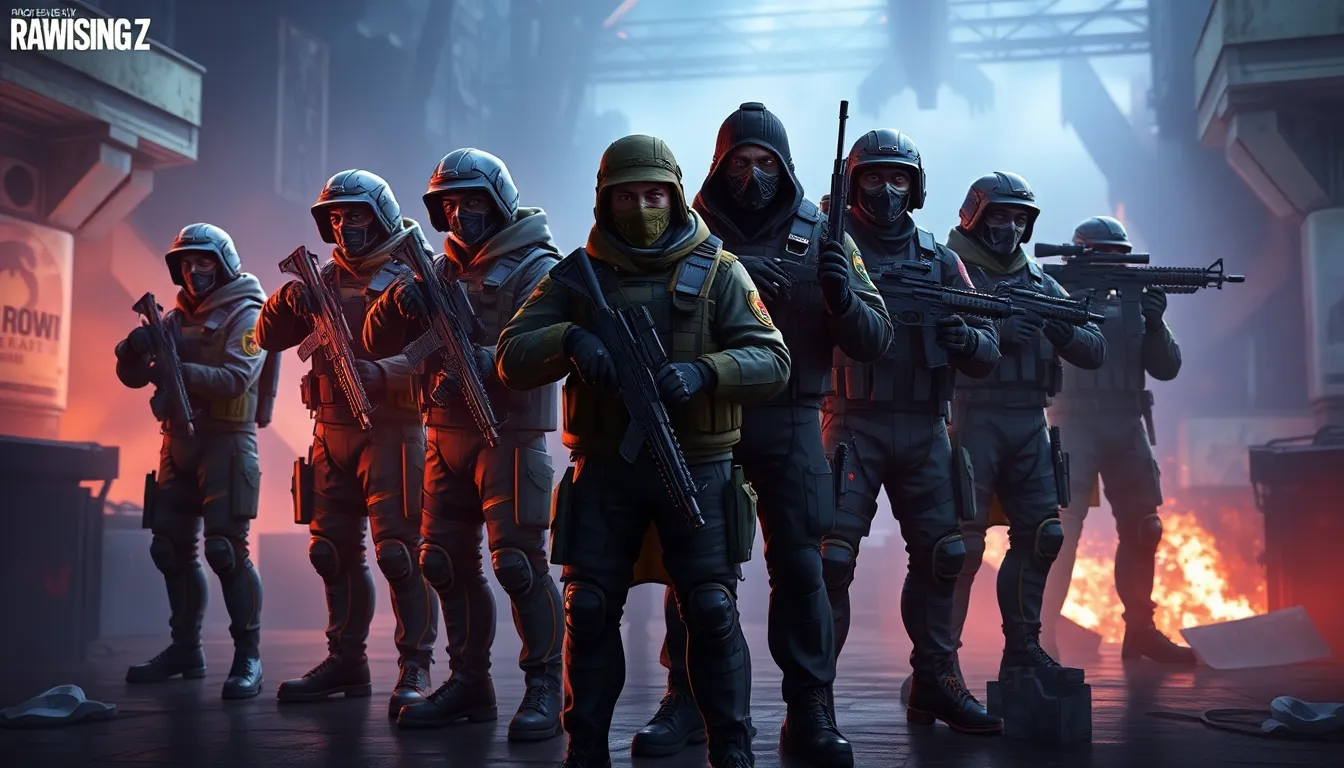
Evaluating operators in Rainbow Six Siege requires a systematic approach. Ranking operators involves several key criteria that influence their effectiveness in various scenarios.
Criteria for Ranking
Factors considered for ranking include unique abilities, weapons, and synergy with team composition. Each operator’s utility plays a significant role in their rating. Defense-oriented operators, for example, often show remarkable strengths in protecting objectives. Conversely, attackers excel at achieving goals through specific skills. Additionally, performance data from high-level plays offers insights into operator effectiveness. Effective use of gadgets can further enhance an operator’s value. Overall, a refined understanding of these elements creates a robust tier list.
Adjustments Based on Meta Changes
Meta shifts prompt adjustments in operator rankings. Developers regularly update Rainbow Six Siege, impacting gameplay and operator viability. Changes such as balancing patches or new operators influence established strategies. When a new operator emerges, it can shift the dynamics of gameplay, changing the effectiveness of existing operators. Players should stay informed on patches and community feedback. Adapting gameplay based on meta changes ensures improved performance. Keeping an eye on competitive trends can enhance understanding of operator strengths and weaknesses.
Operator Tier List Breakdown
This section outlines the operator rankings in Rainbow Six Siege, categorizing them into various tiers based on their effectiveness in gameplay.
S Tier Operators
S Tier operators represent the game’s elite. They possess unique abilities that dominate both attackers and defenders. Example operators like Ash and Bandit consistently influence matches through strong performance and player utility. High mobility and exceptional gadgets make them invaluable in nearly every situation. Choosing an S Tier operator often leads to a strategic advantage, allowing teams to capitalize on their skills. Their strengths often dictate match outcomes, making them first picks in competitive play.
A Tier Operators
A Tier operators show significant prowess and versatility in gameplay. Operators such as Thermite and Jäger fit well within team strategies and contribute to successful outcomes. They balance powerful abilities with effective weapons, making them reliable choices for many players. A Tier operators often complement S Tier operators, enhancing overall team dynamics. Their strong presence on the battlefield helps teams create effective strategies while adapting to different opponents.
B Tier Operators
B Tier operators hold solid capabilities, though they may not reach the heights of higher tiers. Operators like Kapkan and Frost provide useful abilities, primarily in specific situations. Performance still hinges on effective use and teamwork, as B Tier operators require skill to shine. These operators can offer strategic options but often depend on contextual gameplay. They contribute positively, serving as support in diverse team compositions.
C Tier Operators
C Tier operators experience some limitations in effectiveness. While useful, operators like Valkyrie and Mira occasionally struggle against tougher competition. Their abilities provide value, but often require optimal circumstances to be impactful. Players may find them less versatile compared to higher-tiered options. Adaptability remains key, as using these operators effectively often depends on specific maps and enemy line-ups.
D Tier Operators
D Tier operators face significant challenges in relevance during matches. Operators like Clash and Dokkaebi hold situational advantages but generally underperform against stronger choices. Their gadgets may lack the effectiveness seen in higher-tier operators, making them less favorable selections. Teams frequently seek to avoid D Tier operators in competitive play, as their utility may not justify their selection. As the meta evolves, these operator rankings can change, but they often remain at the bottom of preference lists.
Tips for Choosing the Right Operator
Selecting the right operator affects gameplay dynamics significantly. A thoughtful approach ensures a balanced team while maximizing effectiveness.
Team Composition Considerations
Team composition plays a crucial role in operator selection. Choose operators that complement each other’s abilities, creating synergy for effective strategies. Utilizing hard breachers like Thermite alongside support operators enhances both offense and defense. Balance between attackers and defenders maintains versatility in varying situations. Prioritizing operator roles makes it easier to adapt based on team needs and opponent tactics. Communication among team members also fosters informed decisions, ensuring everyone understands their operator’s contributions.
Maps and Strategies
Adapting to specific maps offers strategic advantages when picking operators. Each map has unique features that dictate optimal operator usage. For example, operators with strong vertical play excel on maps with multiple levels. Recognizing choke points assists in choosing defensive operators that control key areas effectively. Consider the objective locations while selecting operators to reinforce the team’s offensive or defensive capabilities. Analyzing previous matches increases understanding of effective operator combinations tailored to specific map scenarios.
Choosing the right operator in Rainbow Six Siege isn’t just a matter of preference; it’s a strategic decision that can shape the outcome of a match. By understanding the tier list and the unique strengths of each operator, players can make informed choices that enhance their gameplay.
Operators in higher tiers typically offer greater advantages and can significantly influence team dynamics. However, even lower-tier operators can shine in the right hands with the right strategy.
Staying updated on meta shifts and adapting operator selections based on team composition and map specifics is crucial. This approach not only improves individual performance but also fosters better teamwork and synergy. Embracing these insights will undoubtedly elevate any player’s experience in the competitive world of Rainbow Six Siege.

